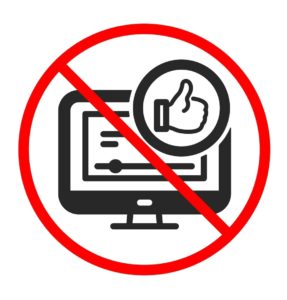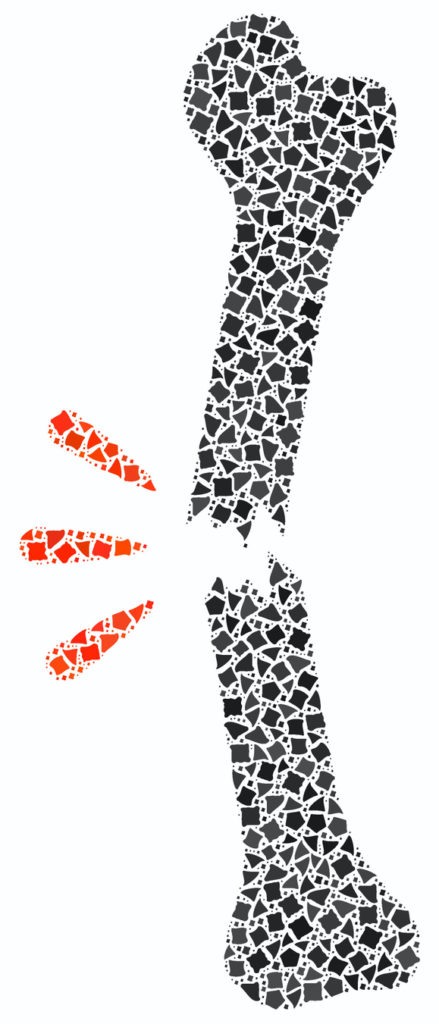Pedestrian Injury Accident Claims When a Car Hits You

On any given day there are thousands of pedestrians on Florida's streets and sidewalks. The constant supply of sunshine means that there's always something to do outdoors. And while this may make you think that Florida is a safe place for pedestrians, you'd be wrong. Florida consistently ranks as the most dangerous place for pedestrians in the entire country.
In one recent year,
9,420 motor vehicle accidents involved pedestrians in Florida. A pedestrian is no match for a motor vehicle. Often, these accidents result in serious injuries or death. If you have been hit by a car while on foot, you may be eligible for compensation. To learn more, contact an experienced
pedestrian accident injury attorney. Schedule a free consultation with
Dolman Law Group Accident Injury Lawyers, PA today to discuss your case.
What Happens After You Have Been Hit by a Car?
Pedestrian accidents can be confusing. Unlike in traditional motor vehicle accidents, you may not know where to go to get coverage. In Florida, a pedestrian hit by a car has the same rights as a vehicle hit by a car,
unlike some other states. This means you have access to your personal injury protection coverage through your own car insurance, as well as the other driver's insurance. What this also means is that you can file a personal injury claim against the at-fault driver. In Florida, accident victims have four years from the date of the accident to file a personal injury lawsuit. The steps you take immediately following your injury will play an important role in the outcome of your case. Below is a guide to what to do after you have been hit by a car.
Immediately Following the Accident
Being hit by a car can be a traumatic experience. Always prioritize your personal safety.
- Move to a safe location: If you have been hit by a car, other drivers may not be able to see you. This puts you at risk of being hit again. If you can, move out of the roadway.
- Call for help: Pedestrian accidents often involve injuries. If there is no one around to do so for you, call for help. If you sustained serious injuries, an ambulance can take you to get the necessary care.
- Get medical attention: Your medical record will be an important part of proving the extent of your injuries. Even if you don't feel hurt, you need to see a doctor as soon as possible. A doctor can rule out serious injuries and take an account of any symptoms you are experiencing immediately following the accident.
- Contact a personal injury attorney: A personal injury attorney can help you prove fault and recover damages after an accident. It's important to talk to a lawyer as soon as possible. This will help your lawyer to gather evidence and build a case.
In the Days Following the Accident
Your attorney will work with the insurance company and the other driver to come to a reasonable settlement. But there are also things you can do to ensure a positive outcome. In the days and weeks following the accident:
 File a police report: If the police came to the scene of the accident, this will suffice as a police report. If the police were not present, you can file a report through the DMV. Get a copy of this report to give to your attorney.
File a police report: If the police came to the scene of the accident, this will suffice as a police report. If the police were not present, you can file a report through the DMV. Get a copy of this report to give to your attorney.- Attend follow-up care: Go to all recommended doctor appointments. Failure to follow your doctor's instructions can weaken your case. When you go to your appointments, be honest about how you are feeling. While your doctor is your personal care provider, what you say will be a part of your medical record. This record will almost surely be a part of your personal injury case. As such, be honest about your symptoms. Don't play up or play down how you are feeling.
- Stay away from social media: Don't post anything that will make the insurance company question the extent of your injuries. This includes any recreational or dangerous activities. If you are claiming serious injury, it is usually best to avoid posting any personal photos until the conclusion of your case.
Common Causes of Pedestrian Injuries
You sometimes hear about a pedestrian running into traffic thinking they can beat the car, or a teenager so engrossed in their cell phone that they walk straight into traffic, but these cases are far from the norm. In almost all cases, the pedestrian is not at fault when they are hit by a car. Instead, these accidents have origins similar to other motor vehicle accidents. Pedestrian accidents can usually be traced back to driver negligence. Common causes of pedestrian accidents include:
- Speeding: Speeding reduces the amount of time a driver has to react to hazards in the road. In the event a pedestrian enters the roadway, if the driver is going too fast, they may not have enough time to stop. Additionally, there is a direct link between the driver's speed and the severity of the pedestrian's injuries. One study showed that pedestrians had about a 10 percent risk of serious injury at speeds of 16 miles per hour or less. At 46 miles per hour, the risk of serious injury jumps to 90 percent.
- Failure to yield the right of way: Drivers often think that they have the right of way, simply because there is not a sign or traffic signal telling them otherwise. But this is often not the case. Every day, accidents happen because drivers don't yield to pedestrians. And believe it or not, many of these accidents happen in a crosswalk when the pedestrian has the right of way. These accidents happen when a driver has a green light and the pedestrian has a walk signal. The driver turns right, without checking for pedestrians, hitting the walker in the course of the turn.
- Distracted driving: Distracted driving is a major problem on the road. Despite recent changes to Florida's texting and driving laws, drivers continue to pull out their phones while driving. According to the National Highway Traffic Safety Administration, it takes, on average, five seconds to check a text. If a pedestrian enters the roadway or the vehicle approaches an intersection during this time, the driver may not see the pedestrian.
- Drunk driving: Drunk driving diminishes a driver's ability to be safe on the road. Alcohol slows a driver's reaction time and interferes with their ability to make good decisions. When a driver has been drinking, they may not see a pedestrian entering the roadway. Alcohol also reduces a driver's ability to control their vehicle. This may cause the driver to swerve or drift onto the shoulder or sidewalk, injuring or killing a pedestrian.
- Poor visibility: Various factors that can lead to poor visibility. Heavy rain or bright sun can make it difficult to see. Beyond weather conditions, vehicle blindspots are a leading cause of pedestrian accidents. This is particularly true for drivers backing up. If a driver does not check their blind spot, or cannot see the person, an accident can occur. In 2015, the year for which the most recent data is available, there were 284 fatalities and 12,000 non-occupant injuries as a result of backing accidents.
How PIP Comes Into Play in Pedestrian Accidents
Florida requires all drivers to carry a minimum of $10,000 in personal injury protection (PIP). Most people don't realize it, but if you are hit while you are a pedestrian and you have auto insurance, you can use your PIP coverage to take care of any medical costs as a result of that accident. It's important to understand that you must visit a qualified medical professional within 14 days of the accident to use your PIP coverage. To be eligible to use the full amount of your PIP coverage, you must be diagnosed with a qualifying emergency medical condition.
How Much Is My Personal Injury Claim Worth?
After an accident, you can file a personal injury lawsuit against the at-fault party. The amount you will be able to recover will depend on a variety of factors including the extent of your injuries and the other driver's coverage. Common costs in a personal injury claim include:
- Medical costs;
- Lost wages;
- Future lost wages;
- Medical equipment;
- Residential modifications;
- Pain and suffering;
- Loss of companionship;
- Loss of enjoyment; and
- Wrongful death.
While the type of injury you sustain does not have a direct impact on the amount of your recovery, it can have an indirect impact in the way of costs and recovery time. Common injuries pedestrians suffer when they have been hit by a car include:
-
Traumatic brain injuries: Traumatic brain injuries are one of the most serious injuries a person can suffer after being hit by a car. When a large vehicle hits you, there is nothing to protect you from injury. Traumatic brain injuries result from a blow to the head or a penetrating wound. These injuries can happen if the car strikes your head or if your head hits the ground. Symptoms of a TBI include headaches, dizziness, confusion, loss of consciousness, and mood changes. Seek medical help right away if you experience these or any other unusual symptoms, or if you believe you hit your head.
 Spinal cord injuries: Spinal cord injuries can happen as a result of a serious blow to the spine or a hard fall. When the spinal cord sustains injury, it can bruise or swell. This can cause permanent paralysis. The degree and location of the paralysis will depend on the point of injury. If you suspect that you have suffered a spinal cord injury, go to the emergency room right away. Common symptoms include numbness and tingling, extreme back pain, loss of movement or sensation, and loss of bowel or bladder control.
Spinal cord injuries: Spinal cord injuries can happen as a result of a serious blow to the spine or a hard fall. When the spinal cord sustains injury, it can bruise or swell. This can cause permanent paralysis. The degree and location of the paralysis will depend on the point of injury. If you suspect that you have suffered a spinal cord injury, go to the emergency room right away. Common symptoms include numbness and tingling, extreme back pain, loss of movement or sensation, and loss of bowel or bladder control.- Broken bones: Broken bones occur when the force of a trauma is stronger than the bone. This is often the case with motor vehicle accidents. A health care provider will use medical imaging to determine the location and extent of the break. Your treatment will depend on the results of this imaging. While a cast or surgery may heal the bone, it is not uncommon to experience long-term or permanent pain as a result of a broken bone injury.
- Internal injuries: Your internal organs are not designed to sustain serious force. A collision with a car can bruise or rupture your internal organs. If untreated, these injuries can be fatal. Internal injuries are not always apparent. This is why you should always get checked out by a doctor if you have been hit by a car.
- Psychological injuries: Being hit by a car is a traumatic experience. Understandably, you could have an emotional reaction to the accident. This may include depression, anxiety, or PTSD.
How a Personal Injury Attorney Can Help
If you or a loved one has been hit by a car, it's important to take action right away. You have rights and you deserve fair compensation. A personal injury attorney can help you file a lawsuit so you can focus on your recovery. In addition to filing a lawsuit, your attorney will take care of the bulk of your personal injury claim. In most cases, a personal injury attorney will:
- Coordinate care and offer referrals;
- Gather and present evidence;
- Work with care providers to defer payment until the conclusion of your case;
- Negotiate and come to a settlement with the insurance company;
- Locate and interview expert witnesses;
- Present your case in front of a jury; and
- Calculate, negotiate, and pay any outstanding bills after you have received a settlement or court award.
Florida law allows accident victims the right to pursue damages after an accident. Your injuries matter and should be taken seriously. After an injury, focus all of your energy on getting better. Knowing that you have the means to cover your costs and provide for your family can make this easier.
If you have questions or need help with your personal injury claim, contact an experienced personal injury attorney.
Dolman Law Group Accident Injury Lawyers, PA
800 North Belcher Road
Clearwater, FL 33765
(727) 451-6900
https://www.dolmanlaw.com/pedestrian-accident-lawyer/florida/
Matthew Dolman
Personal Injury Lawyer
This article was written and reviewed by Matthew Dolman. Matt has been a practicing civil trial, personal injury, products liability, and mass tort lawyer since 2004. He has successfully fought for more than 11,000 injured clients and acted as lead counsel in more than 1,000 lawsuits. Always on the cutting edge of personal injury law, Matt is actively engaged in complex legal matters, including Suboxone, AFFF, and Ozempic lawsuits. Matt is a lifetime member of the Million Dollar Advocates Forum and Multi-Million Dollar Advocates Forum for resolving individual cases in excess of $1 million and $2 million, respectively. He has also been selected by his colleagues as a Florida Superlawyer and as a member of Florida’s Legal Elite on multiple occasions. Further, Matt has been quoted in the media numerous times and is a sought-after speaker on a variety of legal issues and topics.
Learn More
 On any given day there are thousands of pedestrians on Florida's streets and sidewalks. The constant supply of sunshine means that there's always something to do outdoors. And while this may make you think that Florida is a safe place for pedestrians, you'd be wrong. Florida consistently ranks as the most dangerous place for pedestrians in the entire country.
In one recent year, 9,420 motor vehicle accidents involved pedestrians in Florida. A pedestrian is no match for a motor vehicle. Often, these accidents result in serious injuries or death. If you have been hit by a car while on foot, you may be eligible for compensation. To learn more, contact an experienced pedestrian accident injury attorney. Schedule a free consultation with Dolman Law Group Accident Injury Lawyers, PA today to discuss your case.
On any given day there are thousands of pedestrians on Florida's streets and sidewalks. The constant supply of sunshine means that there's always something to do outdoors. And while this may make you think that Florida is a safe place for pedestrians, you'd be wrong. Florida consistently ranks as the most dangerous place for pedestrians in the entire country.
In one recent year, 9,420 motor vehicle accidents involved pedestrians in Florida. A pedestrian is no match for a motor vehicle. Often, these accidents result in serious injuries or death. If you have been hit by a car while on foot, you may be eligible for compensation. To learn more, contact an experienced pedestrian accident injury attorney. Schedule a free consultation with Dolman Law Group Accident Injury Lawyers, PA today to discuss your case.
 File a police report: If the police came to the scene of the accident, this will suffice as a police report. If the police were not present, you can file a report through the DMV. Get a copy of this report to give to your attorney.
File a police report: If the police came to the scene of the accident, this will suffice as a police report. If the police were not present, you can file a report through the DMV. Get a copy of this report to give to your attorney. Spinal cord injuries: Spinal cord injuries can happen as a result of a serious blow to the spine or a hard fall. When the spinal cord sustains injury, it can bruise or swell. This can cause permanent paralysis. The degree and location of the paralysis will depend on the point of injury. If you suspect that you have suffered a spinal cord injury, go to the emergency room right away. Common symptoms include numbness and tingling, extreme back pain, loss of movement or sensation, and loss of bowel or bladder control.
Spinal cord injuries: Spinal cord injuries can happen as a result of a serious blow to the spine or a hard fall. When the spinal cord sustains injury, it can bruise or swell. This can cause permanent paralysis. The degree and location of the paralysis will depend on the point of injury. If you suspect that you have suffered a spinal cord injury, go to the emergency room right away. Common symptoms include numbness and tingling, extreme back pain, loss of movement or sensation, and loss of bowel or bladder control.